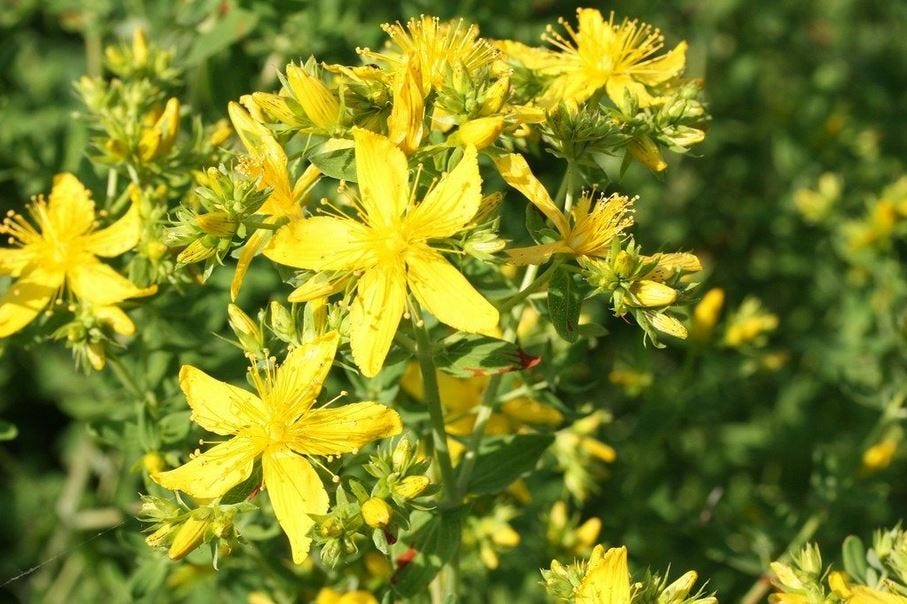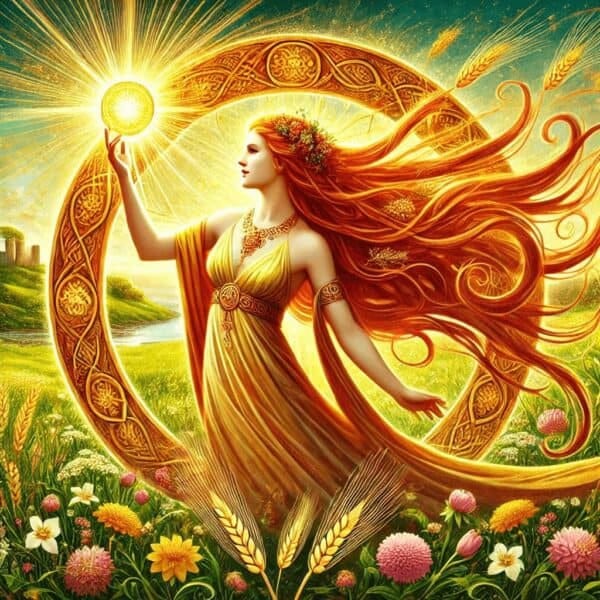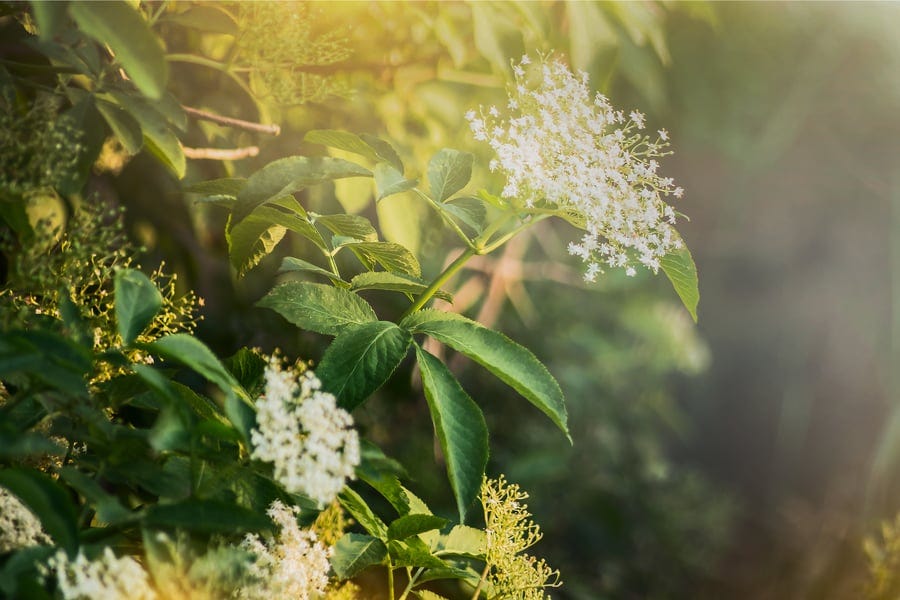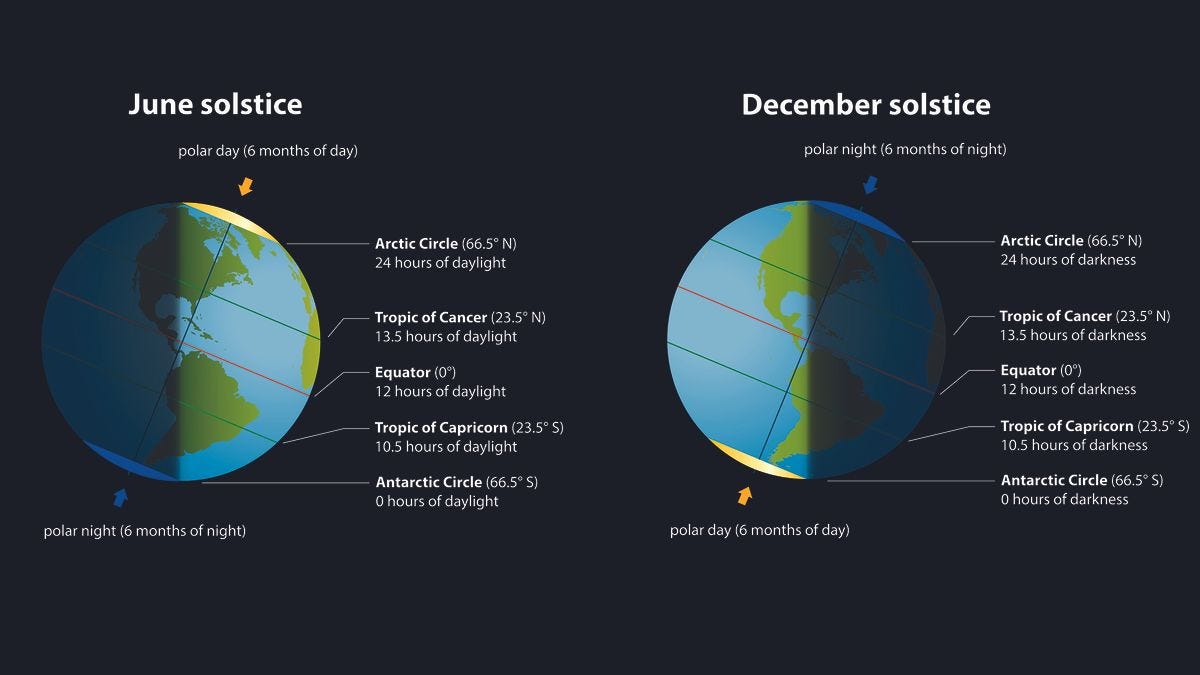
On the ancient holy day of Summer Solstice in mid-June, we are deep into our journey around the ancient Celtic Wheel. In May, we crossed the threshold of summer at the cross-quarter holiday of Bealtaine. After traveling for six months in the “dark half” of the Celtic year, we entered the “light half” ready to expand into our potential and manifest our dreams. Literally and symbolically, the Summer Solstice sees the Sun shining at its brightest and us living our lives to the fullest. Having been envisioned in the Winter and seeded in the Spring, our dreams now pulse with life and radiate out into the world.
Astronomically, the Summer Solstice occurs when the Sun is at its highest point in the sky, or 23.5 degrees from the celestial equator. Seen from our viewpoint on Earth, the Sun has been slowly and steadily climbing northward in the sky since its last pause at the Winter Solstice. (Solstice = “sol”, or sun and “sistere”, or “to stand still.”) At the precise moment of the Summer Solstice, the Sun reaches its zenith in the sky. It seems to “pause” in this position for three days, then it appears to travel southward once again each day. Although the actual date shifts between June 20, 21, and 22, this year’s Summer Solstice occurs on June 20, 2025.
At this time, the Celts (as well as other far-northern cultures) celebrated summer's midpoint. Although this time is the beginning of the summer season (i.e., the hottest months of the year) for many people in the northern hemisphere, the Celts saw the longest day as the pinnacle of the Sun’s power and light. Thus, it was also the beginning of the gradual descent into the darker part of the year. After the Summer Solstice, the days begin to shorten as the Sun’s strength slowly wanes.
The Celtic Year is divided into halves: one darker and one lighter, or one where the Feminine energies are more prominent and one where more Masculine energies are prevalent. The light half is known as Samos; it starts at the cross-quarter holiday of Bealtaine in early May and ends at Samhain, the beginning of the Celtic Year in November. (“All life begins in darkness.”)
Celtic Mythology
The Celtic King and God of Light Lugh is associated with the Sun and personifies the Divine Male, or Samos part of the Celtic Wheel. He is a member of the Tuatha Dé Danann, a race of gods known as “the Shining Ones.” Lugh embodied both light and dark as he was the god of light (Sun god) and intellect, and a god of industry and art. He was not only a warrior, but also a smith, poet, magician, and harpist. He was introduced in the Celtic Wheel journey in the Spring Equinox post and will be discussed more at the cross-quarter holiday in August that bears his name (Lughnasa).
The Celtic Goddess and Fairy Queen Áine (pronounced Awn-ya) is the goddess of summer and sovereignty. She, too, is a member of the Tuatha Dé Danann. Karen Ward in Goddesses of Ireland describes her as “reign[ing] supreme in tandem with Lugh, the Sun god from mid-summer to early harvest as the sunlight ripens the crops.” According to James Mackillop in a Dictionary of Celtic Mythology, Áine means “brightness, glow, radiance, splendour, glory and fame,” and she is “the fairy goddess, patroness of love, desire and fertility.”1

In addition to the Sun (light and power), Áine is associated with wheat (harvest and abundance), the red mare (leadership and authority), and the flower meadowsweet (symbolizing her cloak across the land).
The Celts did not leave a written record, so there are many variations and differing stories in their myths and legends. Like the goddesses Brigid and Éire who are associated with other Celtic holidays, Áine symbolizes fertility and sovereignty. As a Sun goddess, she brings light and warmth to the world. She is described as a beautiful, luminous being who traverses the sky with her long tresses streaming behind her like the Sun’s rays.

The theme of the goddess (feminine) bestowing the right to rule to the king (masculine) is common in Celtic myth. In one oft-shared myth, King Ailill Aulom seeks out Áine at Samhain to ask for her favor. When he sees her, he is overcome with lust and forces himself upon her. In her fury, she bites off his ear, permanently maiming him. In Celtic tradition, only a whole, unblemished person could attain the role of High King of Ireland. Áine’s retaliation meant the king could never reign over all of Ireland.
Many sites across Ireland honor the goddess Áine. Knockainey (also known as KnockÁine, or cnoc Áine - literally, Áine’s hill) is in County Limerick and linked to the Summer Solstice. It is the legendary dwelling place of the pagan goddess/Fairy Queen Áine, where people still gather to celebrate her at mid-summer.
Grange Stone Circle, also in Limerick and only 5 kilometers away from Knockainey, is long associated as a sacred power place for the Summer Solstice. An embanked stone circle with 113 stones (more than similar monuments), it is the only one with a stone-lined passageway entrance and is thought to have been built in the Late Neolithic (circa 3,000 to 2,600 BCE). Traditionally, it has been linked to the Summer Solstice, with the Sun said to align with specific stones at mid-summer sunrise. (Interestingly, some more modern-day archaeologists believe it aligns with the sunset at the cross-quarter holiday of Samhain. Regardless, the consensus is that it is a time-tracking monument.)
The Energies of the Summer Solstice
At the time of Summer Solstice in the northern hemisphere, Mother Nature is flourishing. The latest trees have leafed out, spring flowers are a-bloom, and earlier flower-bearers are beginning to fruit. The days are long, with 4-5 hours of darkness in Ireland and even less in latitudes farther north. For our northern ancestors, this time was halfway through the growing season. The power of the Sun was necessary for the continued health of the crops that would feed people in the dark days of Winter.
The energies of the Summer Solstice are fullness, blossoming, solar fire shining brightly, and eros.
- Mari Kennedy
At the Summer Solstice, the Sun has reached its highest point in the sky during its annual cycle (or more accurately, in the Earth’s orbit around the Sun). Similarly, whenever we are at the peak of success, or a high point, we are experiencing the energies of the Summer Solstice. (We can experience these energies personally at any time, not just in the summer.)

The Deeper Meaning of the Summer Solstice
My teacher Mari Kennedy writes, “…In Celtic cyclical wisdom true power and success dynamically co-arises when we honour the deepest darkness of Winter and the highest brightness of Summer. In this journey around the Wheel we are deconstructing […] a mind that values and rewards only the bright half of the cycle….
“As we approach the Summer Solstice having journeyed through the dark half of the year, we are learning that true power, shining and blossoming is seeded and rooted in darkness.” Only then can our true luminosity and radiance find expression in the external world.
The Summer Solstice is about coming into our full potential and true power (sovereignty). Power in this case is not about might or domination over another or ignoring the darker aspects of ourselves. It is about acknowledging the polarity of the masculine (action-oriented, focused, determined) and the feminine (intuitive, creative, receptive) and integrating them by recognizing their rightful place in the seasonal cycles of our lives.
We honor this time by taking courageous action to manifest our dreams and actively shine our light in the world. Instead of sourcing our power from outside ourselves, we move from our inner knowing and our center (the aptly named solar plexus!). We are also humble and acknowledge our vulnerability, knowing that everything is impermanent. In the fullness of blossoming, just after the Sun’s peak, it will begin to descend again, continuing the cycle of light and dark, masculine and feminine, (re)birth and death.
Until we know the places inside us where we don’t feel worthy, our shining will be based on seeking perfection, and not wholeness. This is the seedbed of authentic humility and shared humanity.
~ Mari Kennedy
Over the next six weeks, notice your relationship to power and how you shine your light in the world. To help align you with the Summer Solstice energies, ask yourself:
If you were to shine your brightest in the world, what would it look like?
What is stopping you from shining brightly in your life right now? (Example: Are there old patterns of unworthiness or low self-esteem? Is there conflict between what success looks like for you versus what it looks like to others?)
Where are you ceding, or not claiming, your power in your life? (Example: Where are you falling into victim consciousness, or rescuing/fixing others?)
Written June 2025.
Sources via Mari Kennedy (marikennedy.com).







